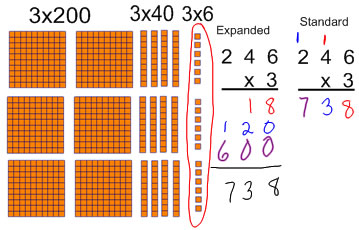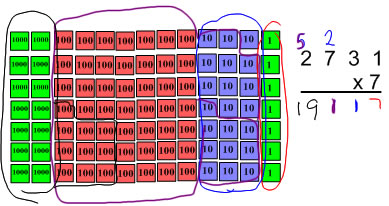The first step in teaching and learning how to multiply multidigit numbers, is learning how to multiply a 1-digit number by a multiple of 10, 100 or 1000.
The first step is to realize that 3x10 is 3 tens, so the product is 30, and 3x100 is 3 hundreds, so the product is 300.
Next we compare 3x4, and 3x40 (and 3x400). If we build 3x40 with base 10 blocks, we get the same 3-across 4-down array as we make for 3x4, but now the array is made of tens, so 3x40 is (3x4) tens or 12 tens = 120.
This creates a nice pattern with the numbers too. 3x4=12 and 3x40 = 120: the 0 in the tens place in 40 corresponds to the 0 in the tens place in 120.
This pattern continues with hundreds too. 3x400 = 1200.
This pattern makes multiplying by a multiple of 10 or 100 easy if you know your 1-digit multiplication facts. Children should practice with these problems before moving onto problems with 2- and 3-digit numbers.
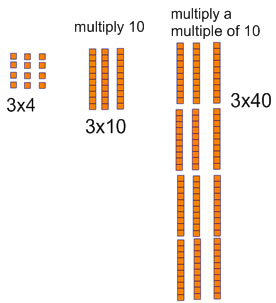
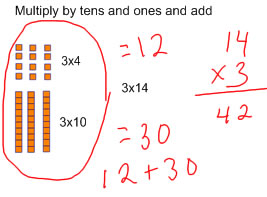
There are two main ways we can write down this process of getting the product. We can write down in an expanded form each of the products we get from each place value, and then add them together, or we can condense our work by adding place values as we go along (this is what the standard algorithm does).
If you are recording your work in the expanded algorithm, it's important to be careful with each of your products and give them the correct place value (12 tens, not 12 ones).
When I am recording the standard algorithm, I try to explain the "carry" step as recording the 2 tens (from 4x6) above the 3 because 4 x 3tens will be a number of tens rather than explaining that I am writing it in the tens place. This sounds a bit silly here when we are multiplying only by 1-digit numbers, but it contributes significantly with making sense with place value when you move to multiplying by 2-digit numbers where the place value of the product is not the same as the place value of the digit in the top row.
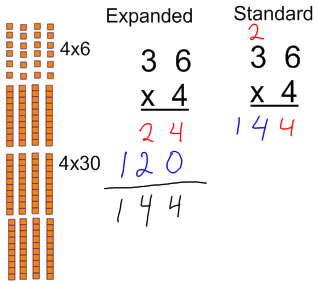

Then we compute some problems where we build the product with manipulatives, and we record. Eventually, we want children to learn and adopt efficient ways of writing down multiplication problems, but for some children it's helpful to spend time with the expanded algorithm before going to the standard algorithm because it shows more clearly the steps that we do to figure out a multi-digit product.
After doing some problems with manipulatives, children should be encouraged to move to doing problems with pencil and paper alone as soon as they feel confident doing so.
